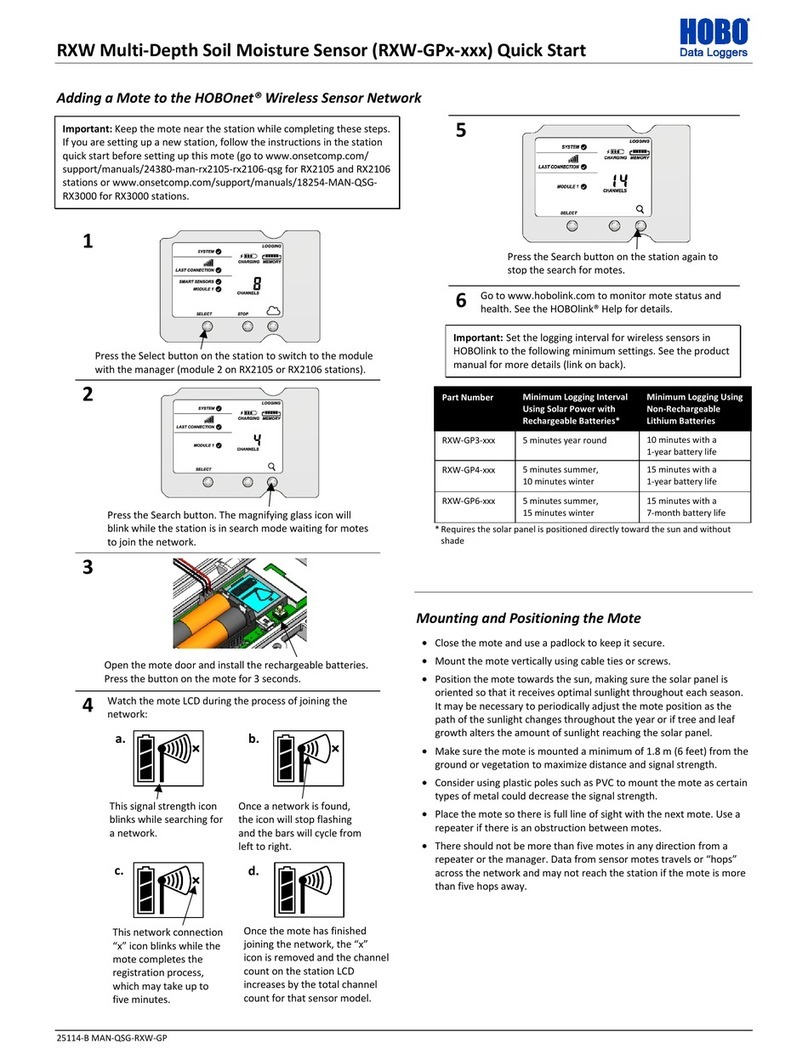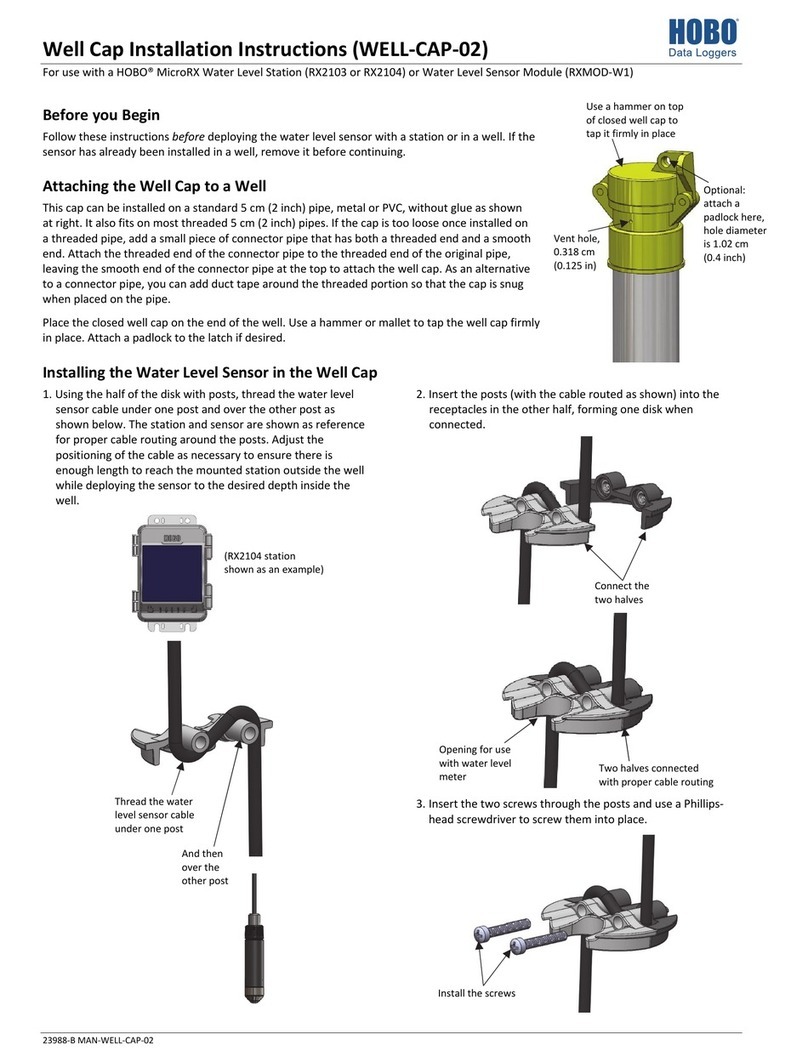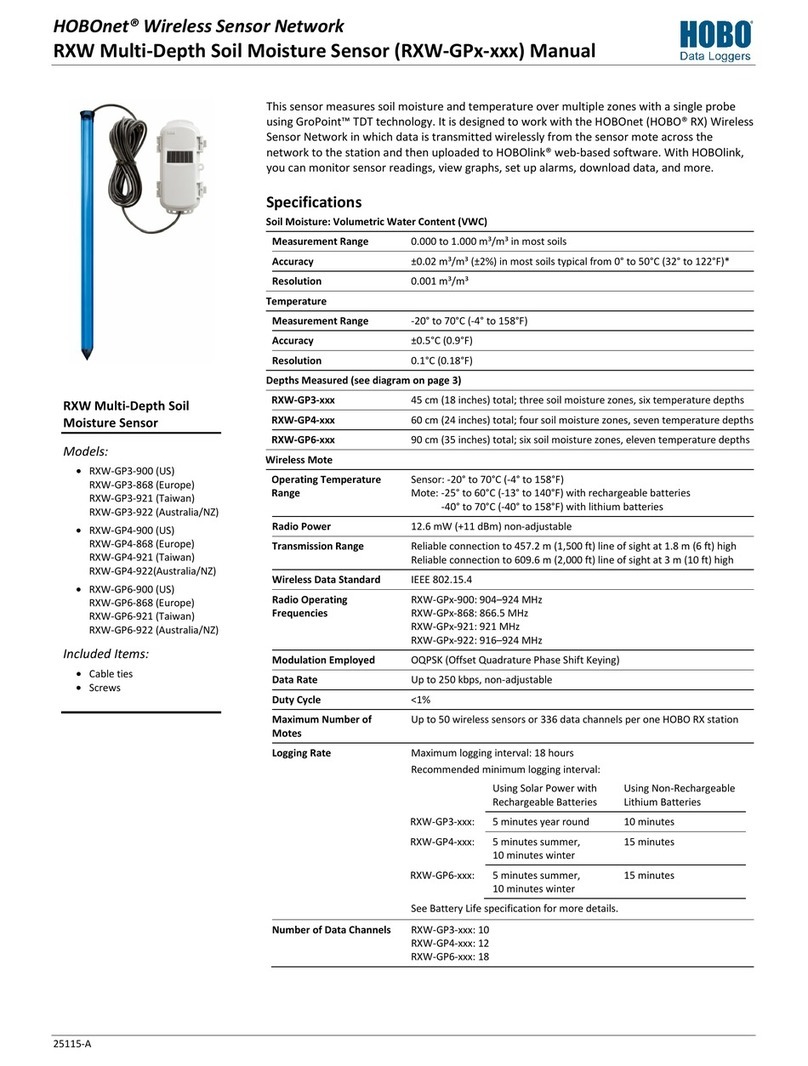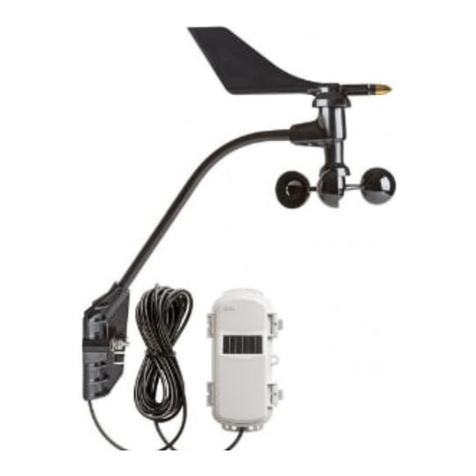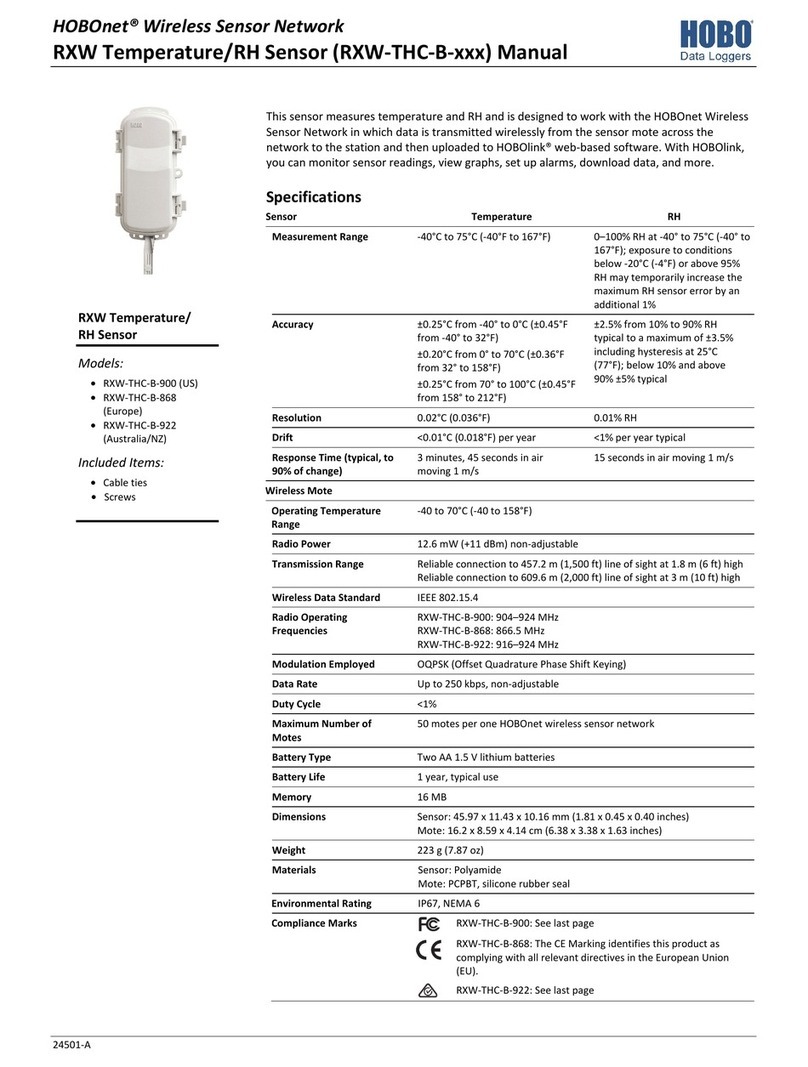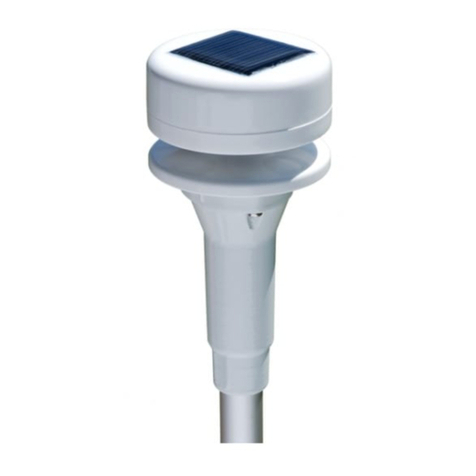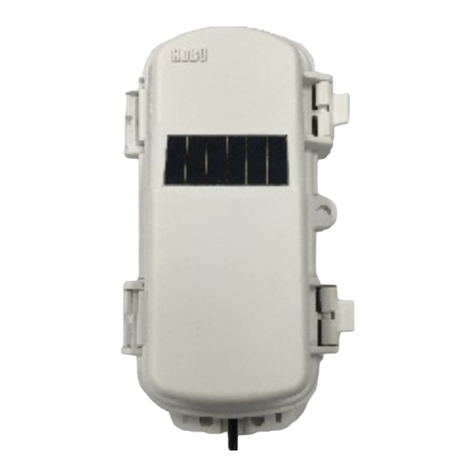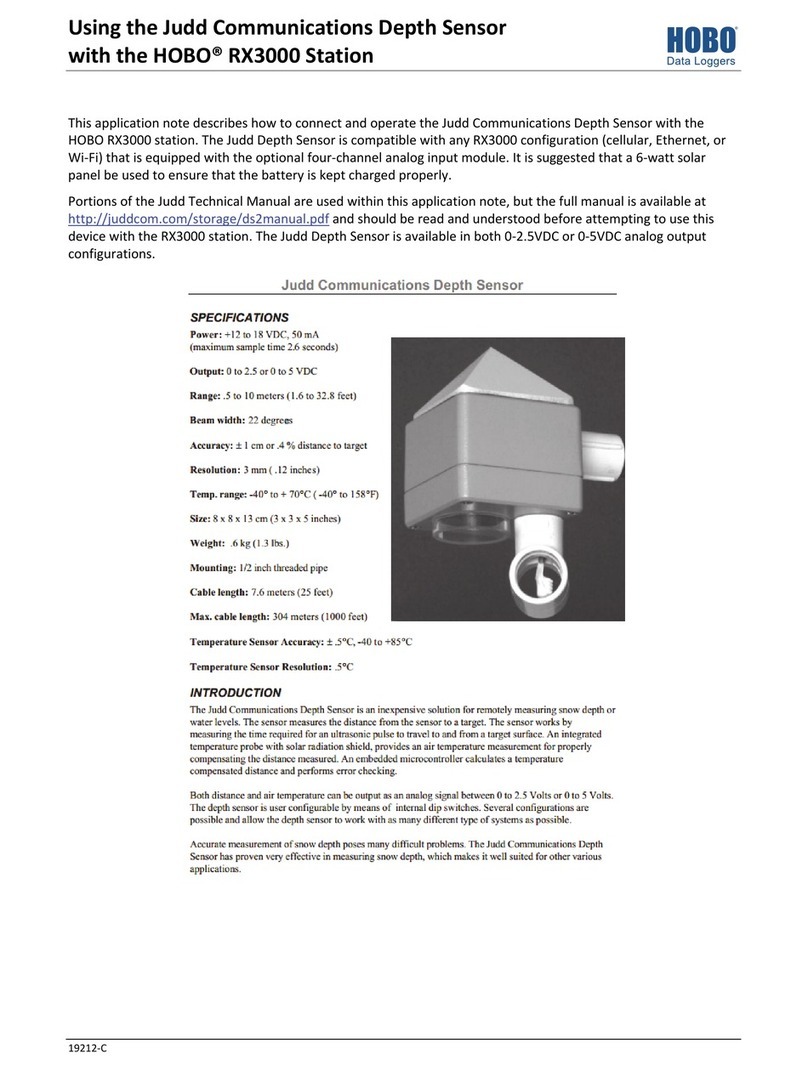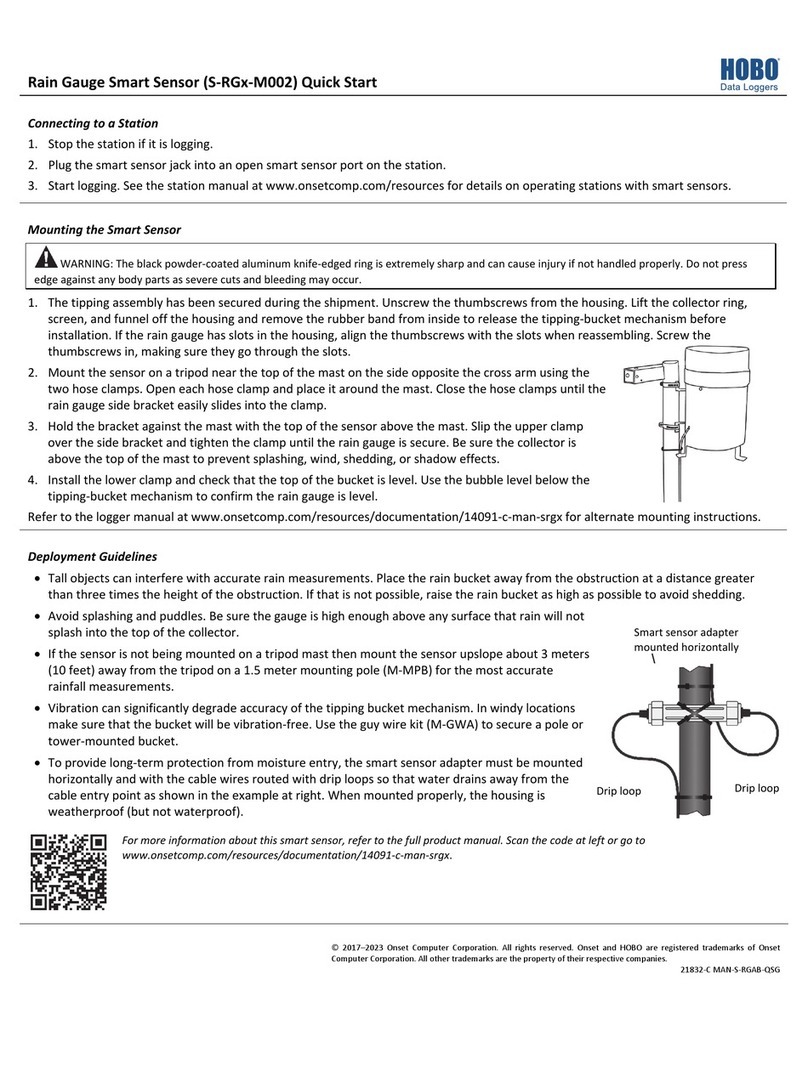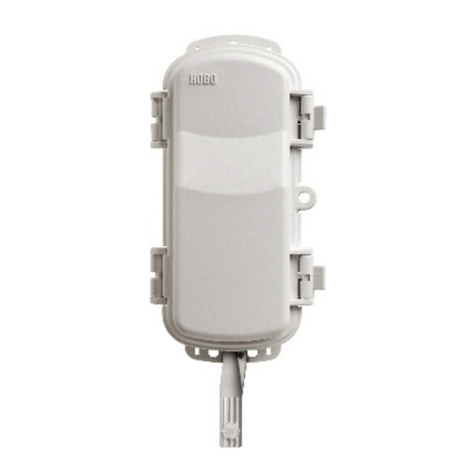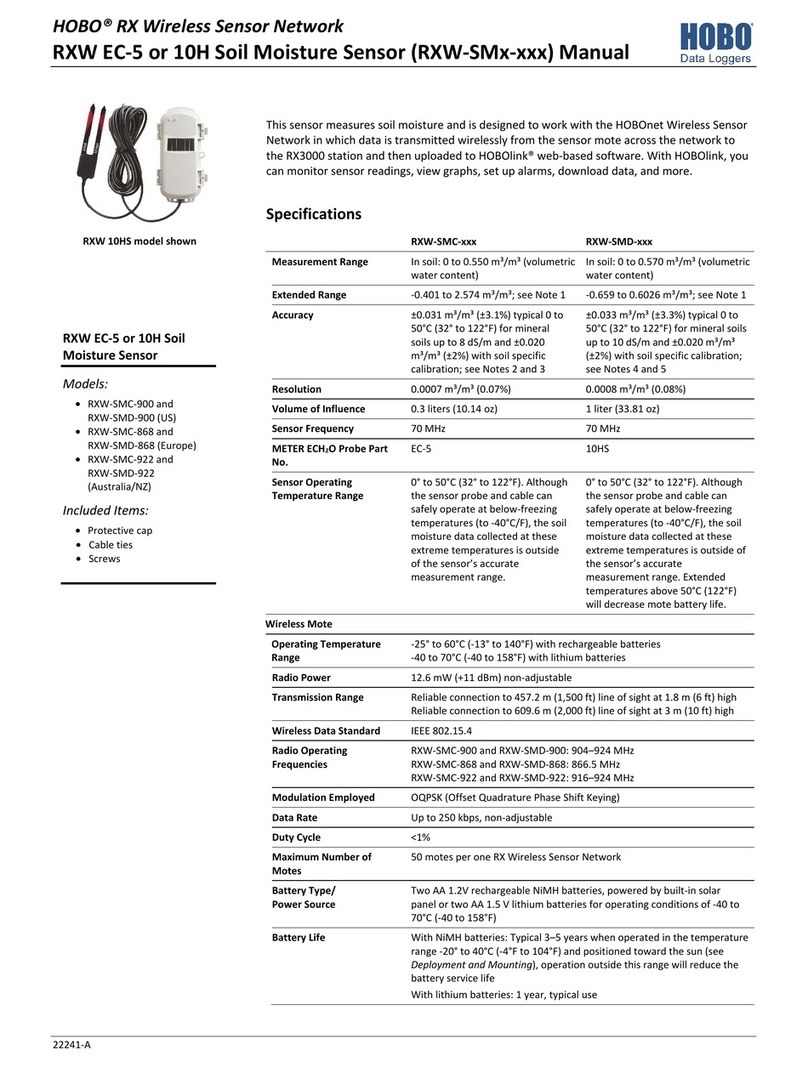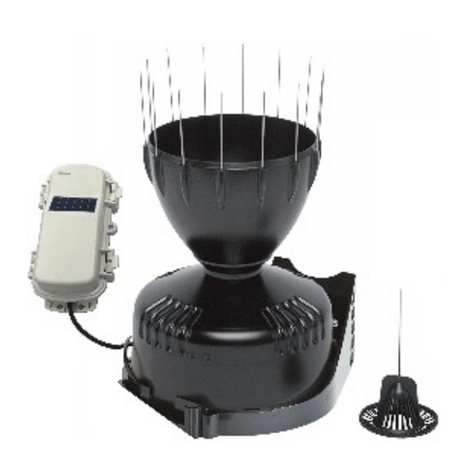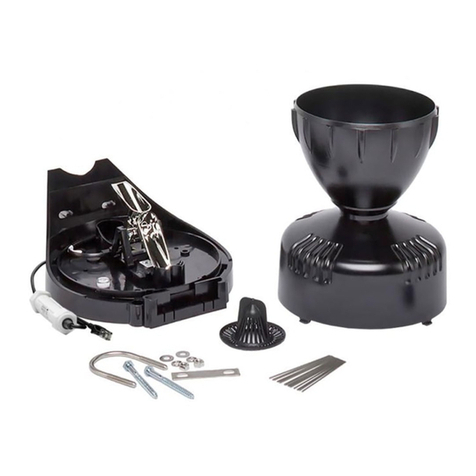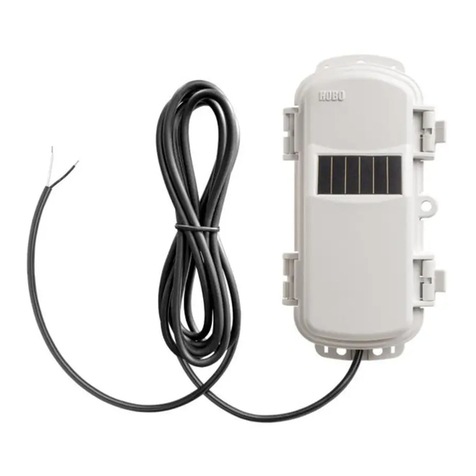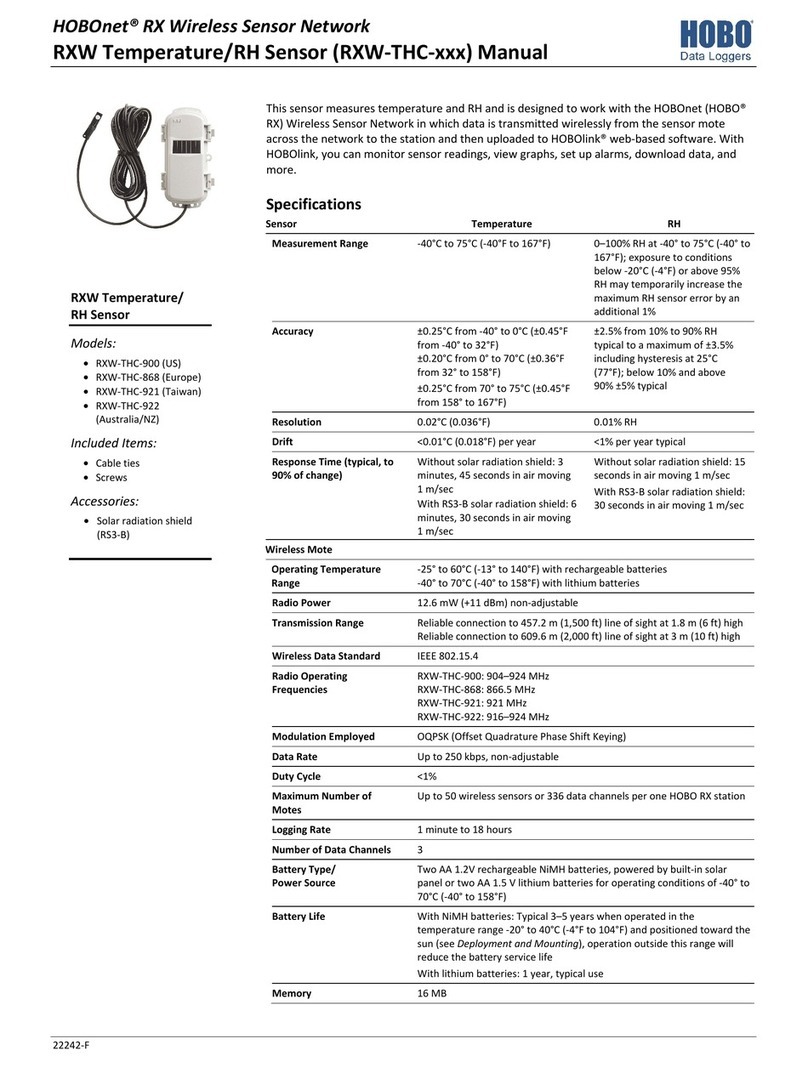
PAR Smart Sensor
Page 4 of 5
4. Shim the sensor as necessary to level it.
Figure 4: Recommended Mounting Plate Dimensions
Mounting Considerations
•Small errors in alignment can produce significant errors. Be certain that the sensor is mounted
level.
•Mount the light sensor where it will not be in a shadow.
•If possible, avoid locating the sensors in dusty locations. Dust, pollen, and salt residue that collect
on the top of the sensor can significantly degrade accuracy.
•Refer to the HOBO Weather Station User’s Guide for more information regarding setting up
complete HOBO Weather Stations.
Connecting
To start using the PAR smart sensor, stop the logger and insert the sensor’s modular jack into an available
port on the logger. If a port is not available, use a 1-to-2 adaptor (Part # S-ADAPT), which allows you to
plug two sensors into one port. The next time the HOBO Weather Station is launched it will automatically
detect the new sensor. Note that the HOBO Weather Station supports a maximum of 15 data channels;
this sensor uses one data channel. Launch the logger and verify that the sensor is functioning correctly.
See the HOBO Weather Station User’s Guide for more details about connecting smart sensors to the
HOBO Weather Station.
Operation
The PAR smart sensor supports measurement averaging. When measurement averaging is enabled, data is
sampled more frequently than it is logged. The multiple samples are then averaged together and the
average value is stored as the data for the interval. For example, if the logging interval is set at 10 minutes
and the sampling interval is set at 1 minute, each recorded data point will be the average of 10
measurements. Measurement averaging is useful for reducing noise in the data. It is recommended that
you use measurement averaging whenever the PAR smart sensor is used in an area where the light level
can vary quickly with respect to the logging interval (for example, under a partial plant canopy or during
partly cloudy conditions). Note that fast sampling intervals (less than 1 minute) may significantly reduce
battery life. See the HOBO Weather Station User’s Guide for more details about sensor operation and
battery life.
Maintenance
Dust on the sensor will degrade sensor accuracy. Periodically inspect the sensor, and if necessary, gently
clean the diffuser with a damp sponge. Do not open the PAR smart sensor as there are no user serviceable
parts inside.
Warning: DO NOT use alcohol, organic solvents, abrasives, or strong detergents to clean the diffuser
element on the light sensor. The acrylic material used in the light sensors can be crazed by exposure to
Supplied in Australia by Instrument Choice
Call our scientists on 1300 737 871
www.instrumentchoice.com.au

